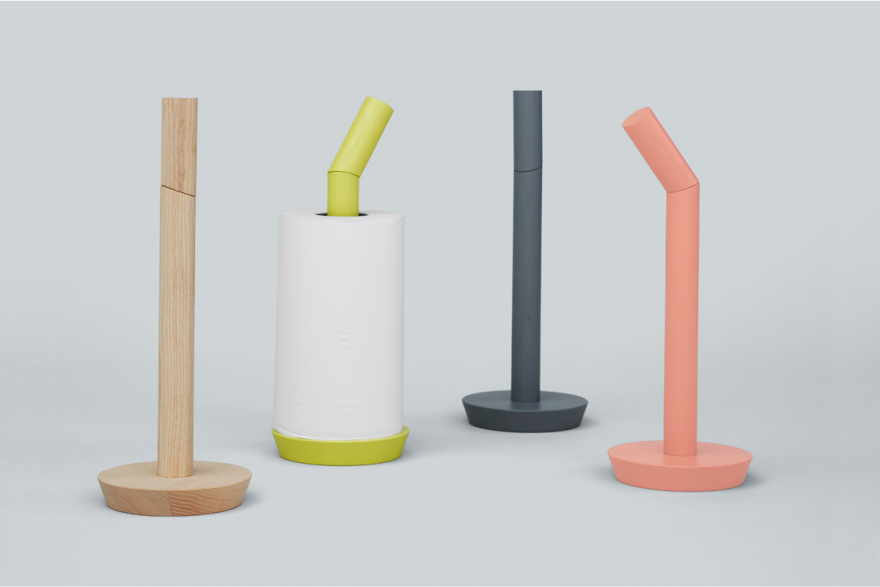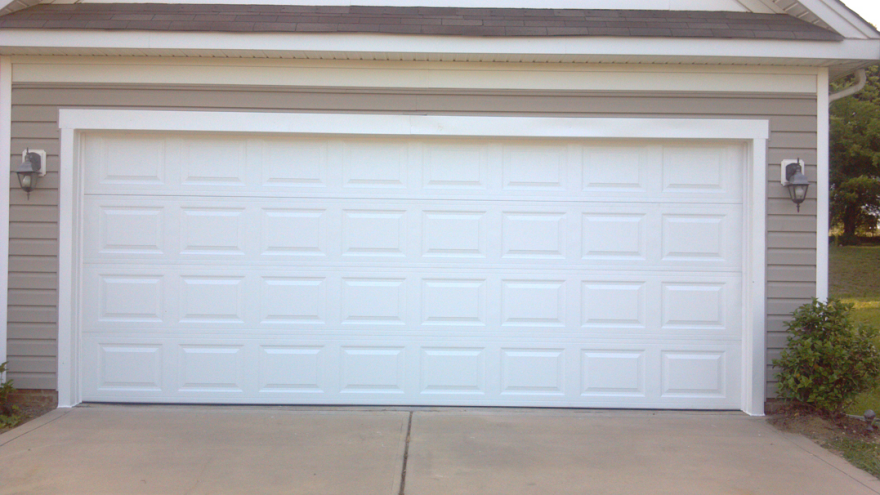Names: Mette and Rolf Hay
Occupation: Founders of the Danish design company HAY
Location: Copenhagen
![]() Portrait by Osma Harvilahti
Portrait by Osma HarvilahtiCurrent projects:
Rolf: We have just launched a big outdoor-furniture collection with the Bouroullecs that we've been working on for about two years. It's a collection of metal dining chairs, tables, stools, bar stools, benches, dining benches, lounge chairs, a sofa—it's quite a big arrangement. Of course, as always, it was a fantastic experience to work with the Bouroullecs. They are extremely passionate, and they take on all details. It's very unusual with designers on that level that they have their hands on everything, but they really do.
Mette: I have been working a lot on our Mini Market concept, which we launched at the MoMA Design Store in New York last month. And at Maison & Object in Paris, in addition to the outdoor furniture, we also launched a new mirror collection by Inga Sempé and a new laundry basket by Big Game, and of course a lot of small objects and products made in-house and with different external designers.
Mission:
Mette:Rolf and I met two years before we started the company. We both worked with a Danish company that represented Cappellini in Denmark at that time, and we really loved the way that Giulio Cappellini was creating his collection, and we felt like there were a lot of people who understood this kind of design, these colors, these objects who very often couldn't afford to buy these products.
Rolf: I think from the very beginning it was quite obvious to us that we wanted to do high-quality design products in an affordable context. And that is still our mission—we want to do products with some of the best and most talented designers, but always in an affordable context. I think we've partly succeeded in that.
![]() The HAY Mini Market at the MoMA Design Store in New York. Photos by Scott Rudd
The HAY Mini Market at the MoMA Design Store in New York. Photos by Scott Rudd![]() Shoppers at the HAY Mini Market
Shoppers at the HAY Mini MarketBackground:
Rolf: I don't have any education. I think I can hardly spell my own name. Honestly, I went to high school. That's it. Then I started to work for different design companies in Denmark, and I knew right away that this is what I want to do.
Mette: I grew up in the industry. My parents had been running a design store since I was a little girl. I was 24 years old when we started here, so I don't have so much background, but I worked for different design companies in Denmark before we started HAY.
Who is your design hero?
Rolf: Charles and Ray Eames. There's no doubt about it. They were the first ones with molded plywood; they were the first ones with fiberglass. Charles was extremely visionary, and then he had a good eye and a good sense of proportions. And Ray was at an extremely high artistic level; her sense for textiles and colors was incredible. I could talk for hours about what they've done. They're so dear to us.
Mette: Also, when you look at a lot of the pictures of the studio, it seems like it was such a good time, and very colorful.
Rolf: You could see that they had fun. I know there are rumors that Charles was always taking credit for all the work in the studio, but when you look at the images and hear people talking about that time, you can tell it was a lot about fun. This is also important to us. Designing and developing something is about putting designers, engineers, toolmakers and all these people in one pot, and then developing something together. And the energy comes from fun and passion. This was a big inspiration.
![]() Ronan and Erwan Bouroullec's new Palissade collection of outdoor furniture for HAY
Ronan and Erwan Bouroullec's new Palissade collection of outdoor furniture for HAYDescribe your workspace:
Mette: Our head office is in Jutland, where we have all our administration, sales, buying, warehouse and logistics. And then in Copenhagen, we have our design studio, where Rolf and I are based. We work here together with our internal design team, our product developer, and architects who are doing new shops. We're in a very old historical building in the center of Copenhagen, near to our flagship store, HAY House. We have five floors. It's a very nice place.
Rolf: The energy of the city has always been important to us. Mette and I are both from the countryside, and I think if you are from the countryside, you will enjoy the city more. And Copenhagen is a beautiful city—the beauty of Copenhagen has always been inspiring to us.
Mette: And it's very important for us to be near our customers. We have kept this very close contact to our flagship store, and we go there often, sometimes to test a new product, to see it in an environment. It's very nice to go there and see people shopping.
![]() Porter paper-towel holder by Shane Schneck
Porter paper-towel holder by Shane Schneck![]() Edge Notebook
Edge NotebookWhat is the best part of your job?
Rolf: For me, the best part is the moment when an object goes from being a drawing to the first mockup of a full-size prototype. I'm extremely passionate about prototyping, because there's nothing worse than a bad prototype. You know, sitting with the drawing, looking at the first renderings on the computer, it's always interesting. But the moment where you go to a full-size prototype, that's the best part for me. Of course, it can also sometimes be extremely disappointing. But if it's good, then it is fantastic, this moment when you feel a chair for the first time. Sometimes it's difficult for me to sleep the night before I'm seeing a prototype, I'm so looking forward to it.
Mette: I think the same goes for me, but Rolf is definitely more into this. This process if something that is making Rolf totally high. For me, it may be more about when a designer comes with a proposal, and I see a new or original idea or a clever design.
“I'm extremely passionate about prototyping. Sometimes it's difficult for me to sleep the night before I'm seeing a prototype, I'm so looking forward to it.”
What is the worst part of your job?
Rolf: To be honest, I'm always extremely scared of not being a success. I'm always scared to fail. This is, for me, extremely tough, and has always been. It's not about proving myself to those around me. It's more about the fact that when you employ over 200 people then it is a huge responsibility. It's fantastic to give jobs to so many people but it's also a big responsibility and a burden. So the worst part for me is that I'm constantly afraid of failing. It's quite tough sometimes, honestly.
Mette: Yeah. The more people you employ, the bigger this thing feels on your shoulders. I think some people from outside could say, "How can you have this feeling when things are going very well for you and the company is growing?" But there is this other side to it.
![]() Laptop Brush
Laptop BrushWhat is the most important quality in a designer?
Rolf: I think passion is probably the most important thing. Of course it doesn't work without talent. You have to be able to work extremely hard for a long time and be very focused. But without the passion, there is no mission. For instance, Ronan and Erwan Bouroullec, they are extremely passionate.
Mette: They think about it constantly.
Rolf: Constantly! That passion makes you capable of focusing on something for a long, long time. And to do a chair, it's a very, very long process.
![]() Analog Clock by Shane Schneck
Analog Clock by Shane Schneck What is your most prized design possession?
Mette: Rolf, he knows all the furniture in the world. I mean, you cannot show him a chair where he can't name who designed it. But we're not the kind of people who need to own all the things we love. I suppose, from my point of view, I would say my father had one of these Castiglioni bike seats put on a pink pole—the Sella stool. It was standing in my father's office, and I remember as a child I thought it was a kind of crazy object, and I wondered why he bought it. And then for my 18th birthday, he gave it to me as a present. So it's something that is very dear to me.
Rolf: I read an interview with Patricia Urquiola where she said that being obsessed with beautiful things, for her, it is not important to own all these things. For her, it's more important to know that they exist. I think that's very well said. Although we are working with something many people would say has a materialistic character, I think it's also a way of finding a life that isn't only about material things.
When we started the company, an old friend gave me one of the leg splints made by Charles and Ray Eames. It's not a rare object. They have produced a huge amount of these; I think everyone has one in the States. But to me—I like this object a lot.
![]() Paper Porcelain collection by Scholten & Baijings
Paper Porcelain collection by Scholten & Baijings![]() Plissé archive folder
Plissé archive folderWhat is exciting you in design right now?
Mette: That's a difficult question. I am working primarily with smaller objects and accessories at HAY, and I think the design world is more open to these everyday objects today that it was several years ago. With our Mini Market, you can find a very nice small eraser or a pencil or some tape . . . So we are happy to be one of the brands trying to put design into areas where you don't normally find design quality.
Rolf: I'm not sure I have an answer to this question, because sometimes I've had to believe that compared to other industries, the furniture industry hasn't changed a lot, and for obvious reasons. In many ways, the way we live at home is actually very close to the way our parents were living. We sleep in a bed; we have a sofa like our parents'. There isn't really anything new. From this position, the question is, How can we add as much value as possible to the products we are doing?
To me, when you do a product, it's about working with aesthetics and comfort. To do a chair, it's a very long process and it takes a lot of focus. The new thing comes from materials, but in many ways it's exactly the same. I think it's fair to ask for a comfortable chair. I think there are no excuses—a chair has to be comfortable. So it's about improving a little bit. You have to add something. And then I think that aesthetics have a very important role to play in environmental issues, because I think if you care about the beauty of an object, it will last in your home for many years. We should never forget that, and it's one of the most important things for us, to create products that can help for many, many years.
This was the latest installment of our Core77 Questionnaire. In the past, we've talked to Giulio Cappellini, Inga Sempé and Ronan Bouroullec.
![]()






























































































































